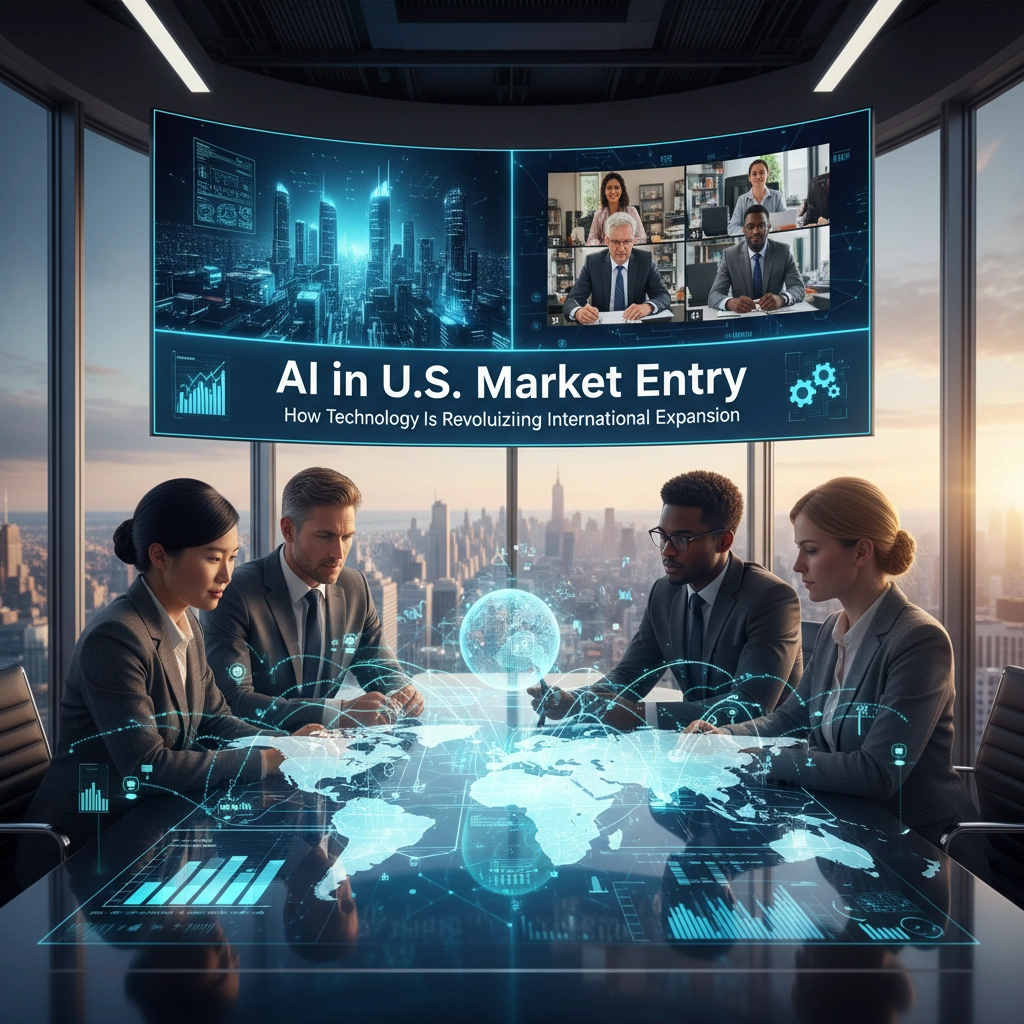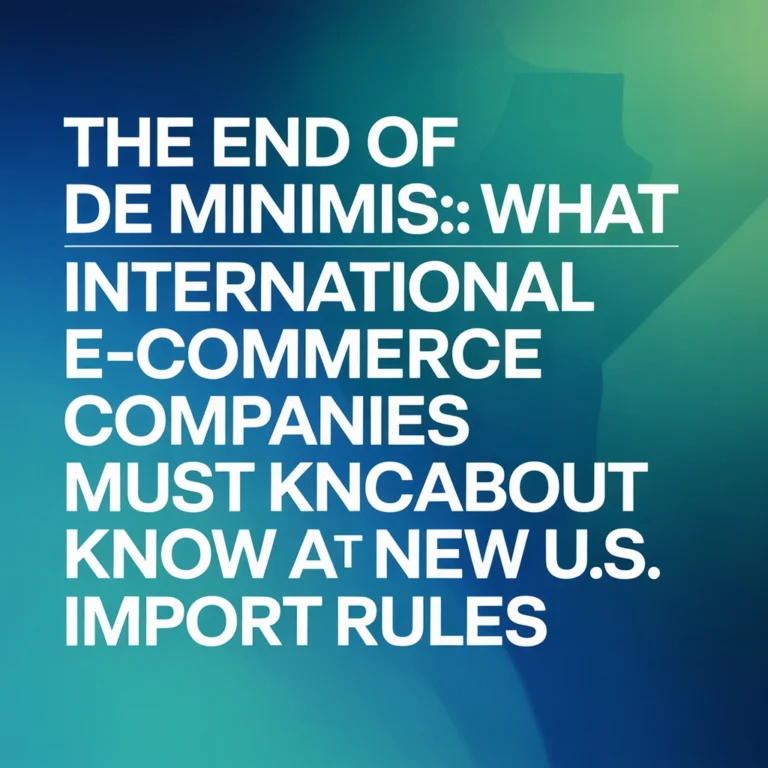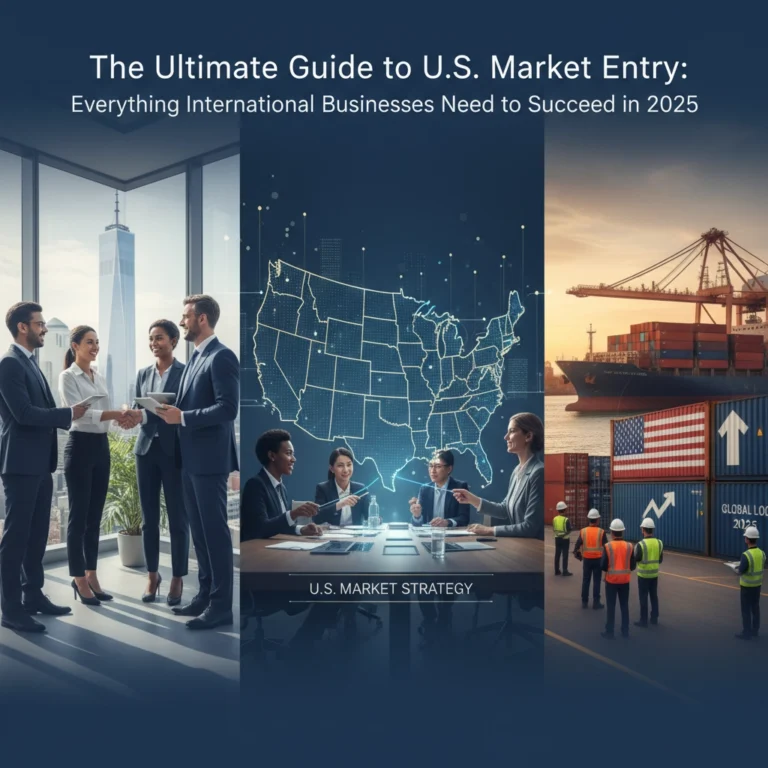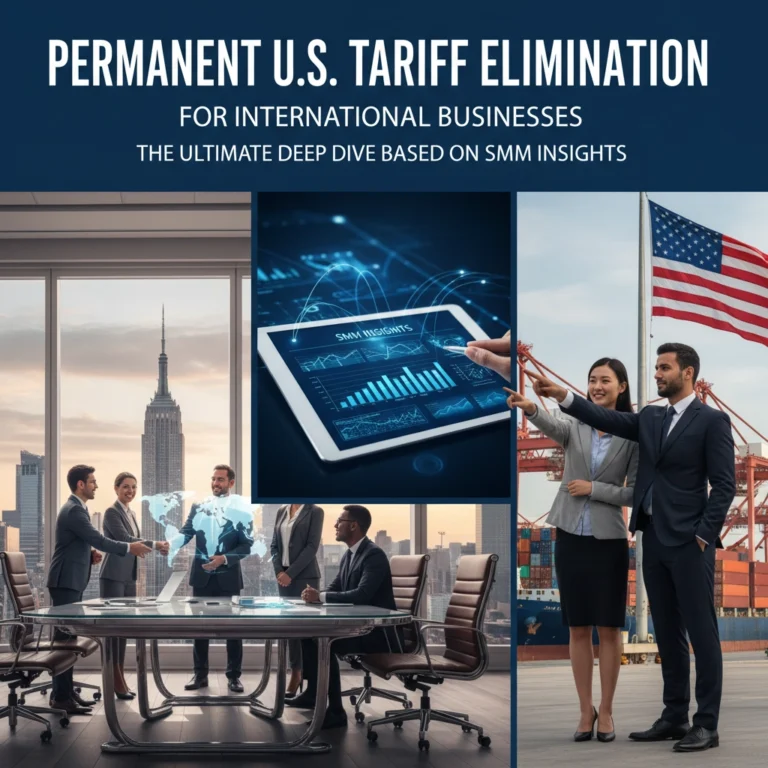AI in U.S. Market Entry: How Technology Is Revolutionizing International Expansion

The way international companies enter the U.S. market has completely transformed. Gone are the days of relying solely on gut instinct, expensive consultants, and months of manual research. Today, artificial intelligence is revolutionizing every aspect of market entry: from initial research to scaling operations: and smart companies are reaping massive benefits.
If you're still approaching U.S. market entry the old-fashioned way, you're not just behind the curve: you're potentially leaving millions on the table.
The Numbers Don't Lie: AI Is Taking Over
Here's a stat that'll grab your attention: 56% of U.S. startups are now betting on global expansion using AI-driven strategies. These aren't just tech companies either: we're talking about businesses across every industry using AI to break down traditional barriers and streamline their market entry process.
The U.S. AI market itself hit $146 billion by 2024, growing at a staggering 19.3% annually. What's even more impressive? Three-quarters of companies are actively experimenting with AI applications, particularly in fintech, software, and banking sectors.
This isn't some distant future trend: it's happening right now, and companies that aren't adapting are getting left behind.

Digital-First: The New Market Entry Playbook
Remember when entering the U.S. market meant setting up physical offices, hiring local teams, and crossing your fingers? Those days are over. 80% of B2B transactions now happen through digital channels, and this shift has completely changed the game.
Here's what this means for your business: You can now test demand, validate your value proposition, and build real customer relationships without massive upfront investments. AI-powered digital platforms let you:
- Test market demand before committing to expensive infrastructure
- Refine your messaging based on real customer data
- Build relationships with potential customers from day one
- Scale systematically using clear triggers and metrics
The beauty of this approach? You're not gambling with your expansion budget: you're making data-driven decisions every step of the way.
Speed Matters: AI Accelerates Everything
If you've ever tried entering the U.S. market the traditional way, you know how painfully slow it can be. Months of paperwork, regulatory hoops, and compliance nightmares were just part of the process.
Not anymore. Enhanced SBA processes powered by AI now enable incorporation 45% faster than traditional methods. We're talking about cutting months off your timeline, which in competitive markets, can mean the difference between success and watching competitors eat your lunch.

AI doesn't just speed up paperwork: it transforms your entire operational setup:
- Automated compliance monitoring keeps you on the right side of regulations
- Real-time regulatory updates prevent costly mistakes
- Predictive analytics help you allocate resources more effectively
- Smart documentation ensures nothing falls through the cracks
Where AI Makes the Biggest Impact
Market Intelligence That Actually Works
Traditional market research involved hiring expensive firms, waiting months for reports, and often getting outdated information. AI flips this completely upside down.
Modern AI systems analyze real-time market data, competitor movements, consumer behavior patterns, and economic indicators to give you insights that are both current and actionable. You're not just getting a snapshot: you're getting a living, breathing understanding of your target market.
Cultural Adaptation Made Simple
One of the biggest challenges international companies face is adapting to American business culture and consumer preferences. AI-powered localization tools now analyze cultural preferences, regional differences, and consumer behavior patterns to help you tailor your approach for maximum impact.
Instead of guessing what American customers want, you're getting data-driven insights into their actual preferences and behaviors.
Partnership Development on Steroids
Finding the right local partners used to be a nightmare of networking events, cold calls, and hoping for the best. AI has revolutionized this process by analyzing potential partners based on compatibility, performance metrics, and strategic alignment.
You're not just finding partners: you're finding the right partners who can actually accelerate your market entry success.

Breaking Through Traditional Barriers
The Regulatory Maze
U.S. regulations are notoriously complex, varying by federal, state, and local levels. One mistake can cost you months of delays and thousands in fines. AI-powered compliance systems map these regulatory requirements in real-time, ensuring you're always compliant and ahead of changes.
Resource Allocation Nightmares
How do you know if you're spending too much on marketing and not enough on operations? Or vice versa? AI algorithms analyze your specific situation and market conditions to optimize resource allocation continuously. No more shooting in the dark with your budget.
Cultural Misunderstandings
American business culture has its own unique quirks and expectations. AI systems analyze communication patterns, business practices, and cultural nuances to help you adapt your approach without losing your core value proposition.
Real-World Applications Across Industries
Healthcare: AI-powered diagnostic tools are helping international healthcare companies understand U.S. market needs and regulatory requirements while improving patient outcomes.
Manufacturing: Automation and AI are improving operational efficiency and reducing costs for manufacturers entering the U.S. market.
Retail: Personalized recommendation systems are driving sales for international retail companies adapting to American consumer preferences.
Finance: AI is helping fintech companies navigate complex U.S. financial regulations while delivering better customer experiences.

The Strategic Advantage
Companies leveraging AI for U.S. market entry aren't just moving faster: they're making smarter decisions. Here's what sets them apart:
Data-Driven Decision Making: Every choice is backed by real data, not hunches or outdated market reports.
Continuous Optimization: AI systems learn and adapt, improving your market entry strategy in real-time.
Risk Mitigation: Predictive analytics help identify potential problems before they become expensive mistakes.
Competitive Intelligence: Real-time monitoring of competitor activities and market changes keeps you ahead of the curve.
What This Means for Your Business
The AI revolution in U.S. market entry isn't coming: it's here. Companies that embrace these technologies are gaining significant competitive advantages through enhanced decision-making, reduced costs, and accelerated time-to-market.
But here's the thing: AI isn't a magic wand you wave to solve all your problems. Success comes from strategically implementing AI solutions that align with your specific objectives, risk profile, and target market dynamics.

The question isn't whether you should use AI for your U.S. market entry: it's how quickly you can integrate these capabilities into your expansion strategy. Because while you're debating, your competitors are already using AI to build stronger market positions, develop better customer relationships, and capture the opportunities you're missing.
The U.S. market is more accessible than ever for international companies willing to embrace AI-powered market entry strategies. The tools exist, the infrastructure is in place, and the success stories are piling up. The only question left is: Will you be one of them?
Ready to revolutionize your U.S. market entry with AI? The future of international expansion is here; and it's powered by artificial intelligence.






